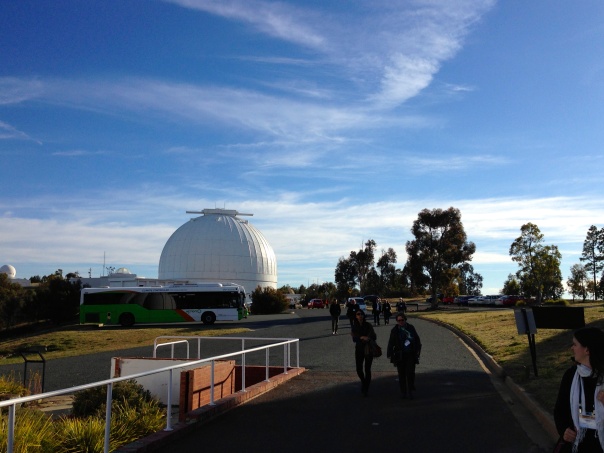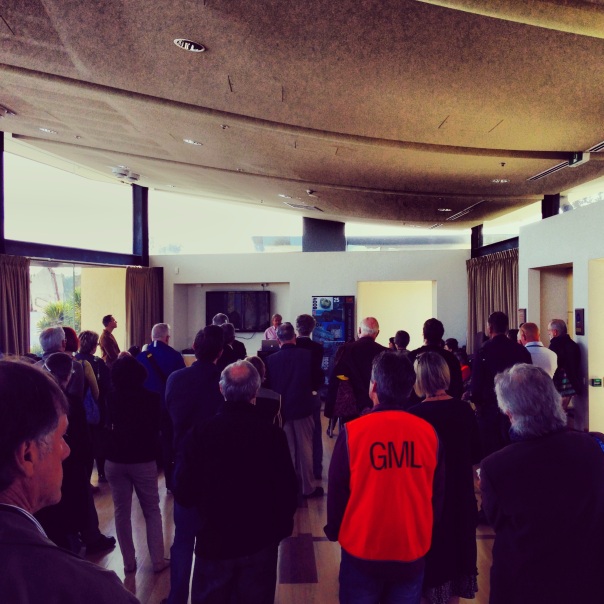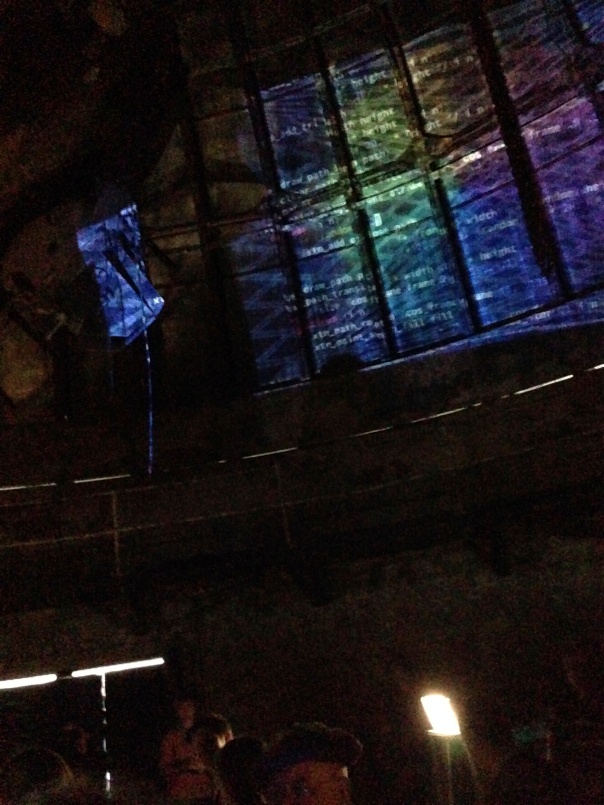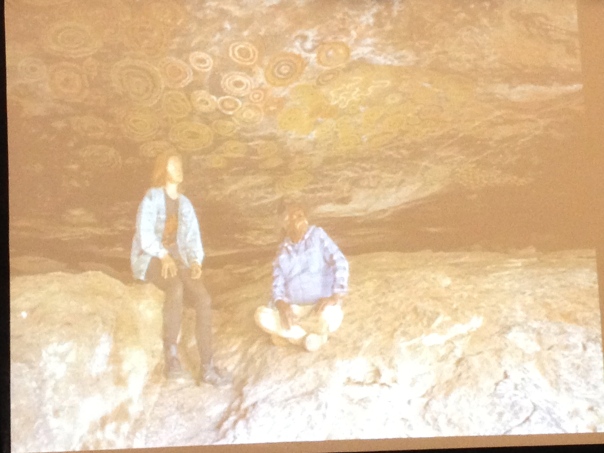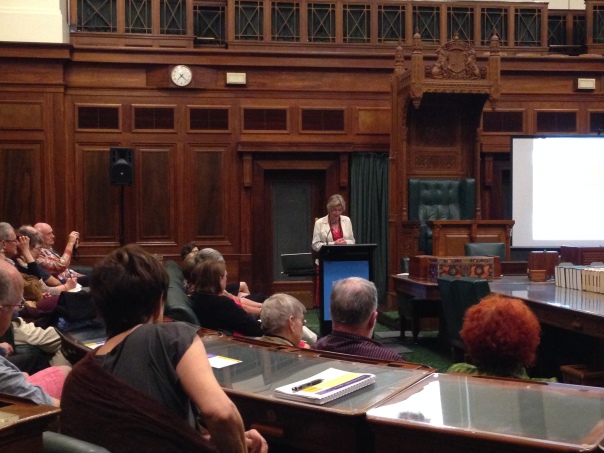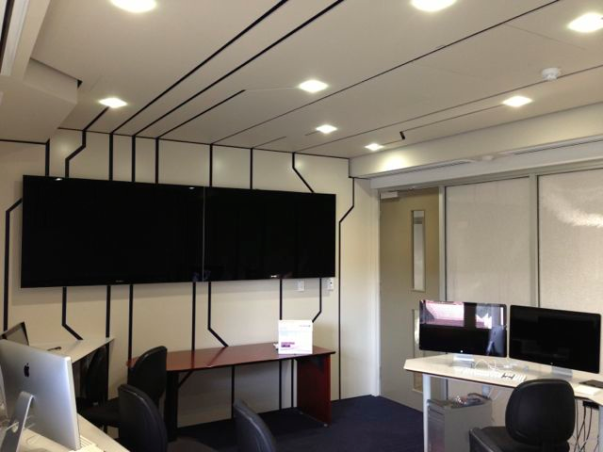| *START* | DUE | CONFERENCE | THEME | LOCATION |
| 27-Aug-14 | 04-May-14 | OpenSYM2014 | Open Collaboration | Berlin Germany |
| 19-Sep-14 | 07-May-14 | JADH2014 | Bridging GLAM and Humanities through Digital Humanities | Ibaraki, Japan |
| 01-Oct-14 | 28-Apr-14 | ICEC2014 | Entertainment Computing | Sydney Australia |
| 04-Oct-14 | 27-Jun-14 | Spatial SUI symposium | Spatial symposium | Honolulu Hawaii |
| 16-Oct-14 | 01-Jul-14 | meaningfulplay | Meaningful play | Michigan USA |
| 19-Oct-14 | 08-May-14 | CHI play | ACM CHI play | Toronto Canada |
| 27-Oct-14 | 06-Jun-14 | eResearch Australia | eResearch Australia | Melbourne Australia |
| 03-Nov-14 | 16-Jun-14 | ICIDS | Interactive Digital Storytelling Conference | Singapore |
| 03-Nov-14 | 30-May-14 | euromed | International Congress on Cultural Heritage | Lemessos Cyprus |
| 11-Nov-14 | 30-Jun-14 | VRST2014 | ACM Virtual Reality Software and Technology | Edinburgh Scotland |
| 11-Nov-14 | 12-May-14 | ACE | Computers in Entertainment | Funchal Madeira |
| 12-Nov-14 | 09-May-14 | ICMI | Multimodal Interaction | Istanbul Turkey |
| 20-Nov-14 | 11-May-14 | mab2014 | Media Architecture Biennale | Aarhus Denmark |
| 24-Nov-14 | 15-Jun-14 | E-iED2014 | European Immersive Education Summit:virtual worlds, learning games | Vienna Austria |
| 25-Nov-14 | 01-Aug-14 | MUM | Mobile and ubiquitous media | Melbourne Australia |
| 02-Dec-14 | 01-Jun-14 | Critical Heritage | Sessions | Canberra Australia |
| 02-Dec-14 | 16-Aug-14 | ie2014 | Interactive Entertainment | Newcastle Australia |
| 03-Dec-14 | 03-Jun-14 | siggraph asia 2014 | Shenzen China | |
| 31-Jan-15 | 01-Aug-14 | tei2015 | Tangible, Embedded, and Embodied Interaction | Stanford USA |
| 18-Apr-15 | 22-Sep-14 | chi2015 | Human Factors in Computing Systems | Seoul Korea |
| 08-Jun-15 | invited | proposed | Humanities Heritage 3D Visualization: Theory and Practice (8-14/06/15) | Arkansas USA |
| 06-Jul-15 | 10-Oct-14 | CAADFutures | The city of the future | Sao Paolo Brazil |
| 06-Jul-15 | ? | DH2015 | Digital Humanities | Sydney Australia |
| 14-Sep-15 | ? | Interact 2015 | Connection.Tradition.Innovation | Bamberg Germany |
| 06-Jun-16 | invited | proposed | Humanities Heritage 3D Visualization: Theory and Practice (8-14/06/15) | Arkansas USA |
| 06-Jun-16 | 26-Jan-16 | DIS2016 | Designing Interactive Systems | Brisbane Australia |
Category Archives: Academic
update on Journals : SCR Journal Ranking for Heritage and Digital Heritage
I don’t know what you make of these results and your view of SJR rankings (which my university apparently use and consider), but some of these journal rankings surprise me! I am especially surprised at the current standings of Presence, Virtual Reality, and Digital Creativity.
Cultural Digital Heritage / Virtual Heritage
The current frontrunner in specialist digital cultural heritage appears to be Journal of Computing and Cultural Heritage
In multimedia it appears to be User modelling and user-adapted interaction
In HCI the International Journal of Human Computer Studies is doing well but there are also several well ranked alternatives
Alternatives
- International Journal of Human-Computer Interaction 0.81
- Foundations and Trends in Human-Computer Interaction 0.67
- Human-Computer Interaction 0.63
- Journal on Multimodal User Interfaces 0.55
- Visual Studies 0.44 (but Arts and Humanities)
- Visual Communication 0.41
- Advances in Human-Computer Interaction 0.34
- Digital Creativity 0.16 (on editorial board)
Heritage alternatives
- Journal of Archaeological Research 1.21
- Cambridge Archaeological Journal 0.76
- Journal of Archaeological Method and Theory 0.72
- Journal of Cultural Heritage 0.51
- International Journal of Architectural Heritage 0.25
Philosophical
Journal of Aesthetics and Art Criticism 0.25
Gaming and VR
- Simulation and Gaming 1.21
- Games and Culture 1.14 (on editorial board)
- Computer Animation and Virtual Worlds 0.54
- Virtual Reality 0.39
- Presence: Teleoperators and Virtual Environments 0.35
- Game Studies 0.32
- International Journal of Gaming and Computer-Mediated Simulations 0.29 (on editorial board)
- International Journal of Computer Games Technology 0.26
Researchers as Infrastructure article in “Studies in the Digital Humanities”
My article Researchers as Infrastructure is now available in The Proceedings of the Digital Humanities Congress 2012 at:
http://www.hrionline.ac.uk/openbook
This is the first issue of the University of Sheffield’s new journal, Studies in the Digital Humanities.
The journal is optimised for viewing on desktop PCs and mobile devices, in HTML, PDF and e-Book formats.
Final talk at Berkeley today
I gave a talk at the Archaeological Research Facility at UC Berkeley then an impromptu rant on biofeedback zombies and minotaurs at CNM game design class (also Berkeley) and last talk on this trip at MOVES Institute NPS Monterey tomorrow… If only I could be in 5 places at once..
See prehistoric pano at http://Instagram.com/p/kWaLphAVID/
CFP: Heritage and digital humanities, Grenoble 10-12.6.2014
This interdisciplinary and international conference aims at gathering and confronting two notions that are currently quite fashionable: heritage and digital humanities. Heritage, to be understood as goods shared by a community and founding its cultural identity, is to be taken in its widest meaning. Digital humanities offer methods, practices and numerical tools serving traditional research objects, but also new ones and leading to new theoretical and analytical approaches. We shall question the specific contribution of digital humanities to the development and dissemination of a given heritage. What can be the advantage of digital technologies with regards to more traditional approaches, whether it is museographical, ethnologic, literary, linguistic, etc.?
Colloque interdisciplinaire en Lettres, Arts et Sciences humaines, organisé par Cécile Meynard (MSH Alpes/Université Stendhal), Thomas Lebarbé (Université Stendhal) et Sandra Costa (Université Pierre-Mendès-France), les 10 et 12 juin 2014.
1 page abstract due before 20 January 2014.
URL: http://www.u-grenoble3.fr/version-francaise/recherche-valorisation/evenements/appel-a-communication-colloque-patrimoine-et-humanites-numeriques–183142.kjsp
“Cultural Heritage in Immersive Displays” talk at the HIVE
On Thursday Dr Jeffrey Jacobson of http://publicVR.org will give a talk at 1PM in the HIVE. A new visualisation facility at John Curtin Art Gallery, Curtin University, Perth
He is one of four visiting fellows who arrived last week to work with me on, projects grants and papers.
I’ll add a video link later of his work with game engines and archaeology and puppeteers.
ICOMOS talk from 2 November, 2013
http://www.slideshare.net/nzerik/icomos-2013can-the-past-be-shared-in-vr
Conference: 2013 Canberra Centenary: ‘Imagined pasts…, imagined futures’
Venue: Museum of Australian Democracy in Old Parliament House, Canberra, 1-3 Nov 2013
TITLE: Can the past be shared in Virtual Reality?
I greatly enjoyed this conference especially the 2 November talk at Mt Stromlo Observatory by Professor Brian Schmidt on his Nobel Prize for Physics winning work on the expansion of the universe. His talk was after a live coding demonstration in Mt Stromlo by University of Canberra Art students.
Also the final day (3 November) panel on indigenous cultural heritage:
Below are some notes from Sunday panel 1 9-11:00 chaired by Professor Carmen Lawrence
Foundational Cultural Routes, Australia is made up of them
Seven Sisters Songline in paper: http://www.canberra100.com.au/programs/kungkarangkalpa-seven-sisters-songline-/
Video: http://sevensisterssongline.com/
Tapaya Edwards
“knowledge is in the mind, the brain, not from the book”
“what will we do when our elders pass away”?
“we will have this problem in 10 years in fifteen years time”
“go to the site with the elders before they are gone”
“Go to the site with the elders, with the technologies, to record things”
Jacqueline Huggins
“There is not one part of this country not affected by songlines”
“Why do white people need to know, why do white people need to know, all the time?
“It has been eroded”
Who said “Oldest living culture on the planet” ??
“I hate that term ‘lost’..”
John Carty, ANU
“How do you heritage list what is in an old man’s brain?”
“You have to understand the dreaming..there are the creation texts of our continent”
Described the Canning Stock ROute Project, 1800 km long through the “guts” of Western Australia
John Avery, Canberra, Australian Government
“..carried the law songs in their actions”
“this is the time of sitting down with the elders”
“in essence the materials we have are writing and mapping…song lines are not places but they are related to places”
Old Parliament House
Leipzig eHumanities Slides, and Visualisation Links
If anyone is interested in my 23/10/2013 Leipzig eHumanities presentation, which is mostly on virtual environments/games (and heritage),
I have just uploaded my presentation to
http://www.slideshare.net/nzerik/leipzig-ehumanities-23-october-2013-talk
But for ease of reference, for links to interesting Digital Humanities/Visualisation tools there is this:
http://www.slideshare.net/nzerik/visualization-notes-most-links-on-last-2-slides
Actually most links on slides 40 and 41.
book proposal “Cultural Heritage Creatives Tools and Archives” now being reviewed by publisher
Summary of proposal:
Our aim is to provide a single point of entry into the world of leading cultural heritage infrastructures and associated tools in Europe. As far as we know there is no easily accessible edited book of this nature that both focuses on key research projects and answers the major questions of the three editors.
The countries represented include Austria, Belgium, Denmark, Germany, Greece, Lithuania, Norway, Romania, United Kingdom, and related chapters from Canada and Australia. We are particularly pleased to include two proposed chapters from Professor Julian Richards of York University (Figure 1), and Professor Sean Ross, Dean of the iSchool, University of Toronto. They were the invited speakers, and have decades of experience in this field.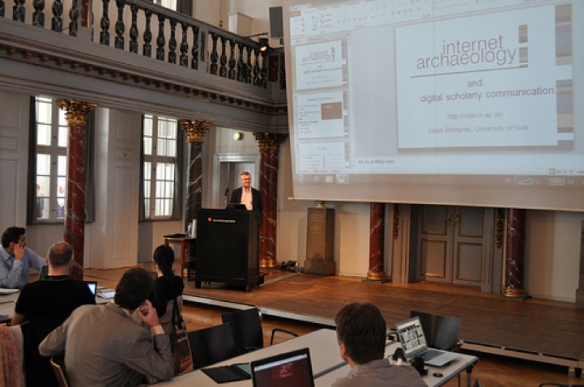
Figure 1: Invited Talk, Julian Richards, York University.
DIGHUMLAB Denmark, and the Digital Curation Unit Athens, ran a two-day workshop at the National Museum of Denmark, in Copenhagen, June 26-27, 2013 (Figures 1-4). There were approximately two-dozen presentations from around a dozen research organisations and European infrastructures, two invited international speakers (Professor Seamus Ross and Professor Julian Richards), and a final panel, which explored how research infrastructures dealing in digital cultural heritage could work more closely together. Various groups and future projects were kick-started from this workshop, including the ERCG (Europeana Researchers Coordination Group), which was set up to align the strategies of research infrastructures in the Social Sciences and Humanities (Figure 2).

Figure 2: Final Panel: Research infrastructures policy panel
Central topics of the workshop were
- Presentation of digital heritage tools and infrastructures (database, knowledge representation, analysis).
- GIS, 3D graphic reconstruction, high-end imaging.
- Ontology related to archives and database storage for material and visual culture, etc. and how best to share data and tools across European countries and partners.
- Database and infrastructure support for fieldwork (cf. issues of data collecting and representation, excavation and survey data management, recording “information at the trowel’s edge” to coin Ian Hodder, how to best process survey and long series datasets etc.).
- Discussion on further collaboration and how to influence EU policy in digital heritage-cultural heritage matters.
The mandate of the workshop was as follows:
“The workshop is open to all but we in particular invite participants drawn in the first instance from the DARIAH, ARIADNE, CENDARI and NeDiMAH and other EU cultural heritage networks. We envisage it will foster the growth of a community of practice in the field of digital heritage and digital humanities, leading to closer cooperation between participants and helping attendees develop tools and methods that can be used by the wider community.”
Figure 3: The Venue, National Museum of Denmark, Copenhagen.
We had a very strong turnout of participants, including keynote presentations by Prof. Seamus Ross, the University of Toronto iSchool’s Dean and Prof. Julian Richards, Professor at York University and Director of the Archaeology Data Service, and introducing innovative work from institutions and projects including: the Serious Games Interactive, the National Museum of Copenhagen, the Europeana Cloud project, DARIAH, DASISH, LARM, EHRI, ARIADNE, V-must (Virtual Museum Transnational Network), NEDIMAH, the Digital Curation Unit-Athena R.C., the Digital Repository of Ireland, and the Gunnerus Library in Trondheim (previously library of the Royal Norwegian Society of Sciences and Letters – DKNVS). We received about a dozen pre-workshop papers, and we are impressed with the quality and range of the work presented.
On this basis, we propose turning some of these papers into an edited volume, organized around the following themes:
- Scholarly information practices in cultural heritage.
- Requirements for digital tools and services.
- Corpora and digital collections.
- Digital infrastructures, architecture and tools.
- Digital cultural heritage, public communication and user experience, and
- Policy issues in cultural heritage infrastructure research and development.
Stanford researchers to open-source model they say has nailed sentiment analysis
Stanford Ph.D. student Richard Socher appreciates the work Google and others are doing to build neural networks that can understand human language. He just thinks his work is more useful — and he’s going to share his code with anyone who wants to see it.
Along with a team of Stanford researchers that includes machine learning expert and Coursera co-founder Andrew Ng, Socher has developed a computer model that can accurately classify the sentiment of a sentence 85 percent of the time. The previous state of the art for this task — essentially, discerning whether the overall tone of a sentence is positive or negative — peaked at about 80 percent accuracy. In a field where improvements usually come fractions of a percent at a time, that 5 percent jump is a big deal.
It’s also a big deal to businesses, which are trying harder than ever to automate the…
View original post 747 more words
Open Access journal scandal-the replies
The recent Science article on Open Access journals that accepted a scam paper has met with a storm of protest. Please be careful with the article as it did not have a control group (did not compare to paywall publications) and had a bias in OA journal selection.
Yes there are lists of OA journals to avoid (http://scholarlyoa.com/publishers/) but here are some responses to the contentious Science article
http://www.scilogs.com/in_scientio_veritas/science-sting-openaccess-peerreview/
http://oaspa.org/response-to-the-recent-article-in-science/
http://www.theguardian.com/higher-education-network/blog/2013/oct/04/science-hoax-peer-review-open-access
http://im2punt0.wordpress.com/2013/10/04/science-mag-sting-of-oa-journals-is-it-about-open-access-or-about-peer-review/
http://osc.centerforopenscience.org/2013/10/04/a-publishing-sting-but-what-was-stung/
http://www.michaeleisen.org/blog/?p=1439
NB Curt Rice, Trondheim, recently tweeted: The EU has a goal that 60% of publications they finance are open access, by 2016.
The future of games in museums: what should we be doing?
very articulate post! Now to play those games!
A confluence of related projects and talks has got me thinking about where games in museums should be going in the future. There have been some notable successes in museum games to date, and some failures. Where to go from here? Here are some assembled thoughts on the types of games and game design practices I would love to see more museums exploring.
Collaborative games
Now, I love competitive games, but not everyone does, and competition can be off putting and disruptive in, say, family situations (I’m sure you all have stories about the game of Monopoly that ended in tears). Collaborative games are perhaps more suited to the mixed audiences and interests that are represented by museum visitors.
For example, Spaceteam is absolutely one of my favourite games of the last few years. It manages to be ridiculous, hilarious, breathlessly exciting, social and visually striking, all at the same…
View original post 2,039 more words
Evaluation Criteria in Digital Heritage
Some suggestions I sent to a panel on the above topic. I am sure I missed many key (main) points
- standardised guidelines to reviewers on how to review, currently the reviewing standard is not standard, in both senses of the word!
- If the conferences (at Digital Heritage 2013 Congress Marseille) represented (CAA, Arch. VSMM etc) at least shared some info on how papers et al are reviewed or could be more consistently reviewed it would be of great help to the gathered scholars
- discussion on the major issues in evaluating virtual heritage
- mentioning standard papers and projects that address some of the issues that many people keep returning to without realising it has already been critiqued/tested
- references to current evaluation methods and strategies in related societies (archaeology, ISPR Presence, VR society etc).
- attempt to marshall the references together or a portal to list related resources
Just this week I was explaining to someone problems with Likert surveys that are in journals he had not read, I had to share papers with him myself from these authors as the papers are scattered over the internet and behind academic paywalls.
Abstract for talk at ICOMOS imagined pasts…imagined futures
Talk, 2 November 2013, Old Parliament House, Canberra, ICOMOS 2013 conference
TITLE: Can the past be shared in Virtual Reality?
There is an interesting divide between historians and the public that must be debated, how to best use virtual heritage, and digital media in general, to learn and share historical knowledge and interpretation. Heritage and history do not have to be a series of slides; space-time-intention can now be depicted and reconfigured. Teaching history and heritage through digitally simulated ‘learning by doing’ is an incredibly understudied research area and is of vital importance to a richer understanding of heritage as lived. However, the actual spatial implications of siting learning tasks in a virtual environment are still largely un-researched. Evaluation of virtual environments has been relatively context-free, designed for user freedom and forward looking creativity. It is still much more difficult to create a virtual place that brings the past alive without destroying it.
There has been an explosion in virtual heritage conferences this century. In the last year alone, there have been calls for digital cultural heritage or virtual heritage by Graphite, VSMM, New Heritage Forum, VRST, VAST, DIME, Archäologie & Computer, and DACH, just to name a few. An outside observer may believe that such academic interest, coupled with recent advances in virtual reality (VR), specifically in virtual environment technology and evaluation, would prepare one for designing a successful virtual heritage environment. Game designers may also be led to believe that games using historical characters, events or settings, may be readily adaptable to virtual heritage. This paper will advance key contextual issues that question both assumptions.
Beacham, R., Denard, H., & Niccolucci, F. (2006). London charter for the computer-based visualization of cultural heritage. Retrieved from http://www.londoncharter.org/introduction.html Fredrik, D. (2012). Rhetoric, Embodiment, Play: Game Design as Critical Practice in the Art History of Pompeii. Meaningful Play 2012 conference paper. Retrieved fromhttp://meaningfulplay.msu.edu/proceedings2012/mp2012_submission_178.pdf
Leipzig eHumanities 2013 Seminar abstract, Leipzig Germany
Leipzig eHumanities Seminar, Leipzig, Germany
Date: 3:15-4:45 PM, Wednesday 23 October 2013
URL: http://www.e-humanities.net/events/2013-ehum-seminar-call.html
SLIDES OF TALK ONLINE AT: http://www.slideshare.net/nzerik/leipzig-ehumanities-23-october-2013-talk
Title: Interacting With History Using Virtual Environments
Where historians wish to develop digital environments to teach and disseminate, I suggest that the crucial issue is interaction and the learning that results from that interaction (Mosaker, 2001). In order to improve interaction, designers and historians could examine games and why they are so successful; a considerable amount of literature has argued that interactive engagement in a computer medium is best demonstrated by games (various references are provided in Champion, 2008). Although they are not easily customized for serious historical learning, game technology and online worlds are surprisingly advanced and span multiple platforms and devices, offering many opportunities for educational design. In this talk I will outline conceptual not technical issues in the development of these serious and pervasive games, outline a brief theoretical classification system, and provide examples of promising tools and interactive methods to help history and heritage scholars develop appropriate learning content.
Today, electronic games are an important vehicle for learning (Anderson, 2010; Dondlinger, 2007). At the minimum, a game is an activity that (1) typically has some goal in mind, something that the player works to achieve, (2) has systematic or emergent rules, and (3) is considered a form of play or competition (Oxford, 2010). While this encompasses “skill and drill” types of games, many of today’s digital games are much more complex, providing an interactive narrative in which the player must test hypotheses, synthesize knowledge, and respond to the unexpected (Dondlinger, 2007).
According to Ang (2008), a game can motivate the student via ludology or narrative or both. Yet there is still debate over whether the communication medium makes any meaningful difference in how well students learn (Jacobson, 2011). However, I believe that computer games and related media do have unique affordances for bringing history to life and can help historical narratives be experienced directly in the form of the game, or in a game-like environment. For evoking and communicating historical situations or heritage values I am interested in helping the player/user/student develop a deeper understandings rather than simply memorizing facts (Bloom, 1956). I wish to convey the cultural significance of what is represented and interacted with.
There are many examples of game engines and digital worlds for historical visualization, there are also explorative games where the historical information augments the experience, or is absorbed as an ambient medium. These projects have had some notable successes, but, arguably, important humanities-related issues are not being answered.
For example, can users learn via interaction the meanings and values of others, do we need to interact as the original inhabitants did? How can we find out how they interacted, and through the limited and constraining nature of current technology help interaction become more meaningful, educational and enjoyable (Handron & Jacobson, 2010)? How do we even know when meaningful learning is reached?
Scholarly knowledge does not easily translate to audience knowledge; nor is scholarly knowledge necessarily the type of knowledge that would best engage the public. And if we can use digital worlds for teaching and learning about heritage and history, is it preferable for the audience to learn about a collection of culturally situated past experiences, or a strictly academic procession of historical events? For example, Smith noted that there has been confusion between history as meaning the past, and history as being something produced by historians. Given that even philosophers such as Goldstein (1964) and Gale (1962) disagreed on what constitutes history and what constitutes recollection of the past; how can students or the general public reliably distinguish between the two? And even if we agree on what is the historical content, can we agree on how it can be or should be accessed?
Ideally, virtual environments may help the general public to create, and share and discuss hypothetical or counterfactual places, meet virtually in these places with colleagues to discuss them, work in these recreations to understand limitations forced on their predecessors, or develop experiential ways to entice a potential new audience to both admire the content and the methods of their area of research. However, these academic disciplines are typically book-based and do not see that an academic publication is also a simplification and metaphorical extension of the remains and ruins it describes.
So perhaps technology or evaluation is the not the fundamental problem. Skeates (2000) warned that archaeologists need to reconsider their field as a communication medium, and not just as a closed scientific discipline. For while these books presuppose a vast domain of knowledge, a certain learnt yet creative technique of extrapolation; they typically do not cover the experiential detective work of experts that visit the real site (Gillings, 2002).
Using media such as game engines to represent the past or digital places that represent the future, it is all too easy to be taken in by the lure of technology and forget to concentrate on enhancing the user experience. There is also a school of thought in archaeology that views digital media as purely a shop façade for the serious and scholarly past-time of reading and writing books (Parry 2005; Gillings, 2002). Yet if we avoid teaching with digital media, how will the changing attention spans and learning patterns of new generations be best addressed (Mehegan, 2007)?
Even if we decide on what we are evaluating, it is not clear how to evaluate. The ethnographic techniques used by researchers may be effective in recording activity, but they do not directly indicate the potential mental transformations of perspective that result from being subjectively immersed in a different type of cultural presence (Benford et al, 2002).
Conclusion
We lack digital history projects that are meaningful and engaging learning experiences. The conventions on how to play games are known to a wider number of people than frequent computer gamers, and these conventions typically provide engaging and challenging goals, strategies, and performance feedback which taken together help people to find some form of internal meaning and purpose in interacting with a virtual environment. In my proposed talk I will outline the major issues and sketch out possible solutions.
References
BBC Ancient History Section. (Undated). Death in Sakkara: An Egyptian Adventure, http://www.bbc.co.uk/history/interactive/animations/ironage_roundhouse/index.shtml
Benford, S., Fraser, M., Reynard, G. Koleva, B., and Drozd, A. (2002). Staging and Evaluating Public Performances as an Approach to CVE Research, Proceedings of the 4th international conference on Collaborative virtual environments, ACM New York.
Bloom, B. S. (1956). ‘Taxonomy of Educational Objectives’, Book 1 Cognitive Domain. New York: Longman Inc.
Champion, E. (2008). ‘Otherness of place: Game-based interaction and learning in virtual heritage projects’, International Journal of Heritage Studies, 14(3), 210-228.
Dondlinger, M. J. (2007). ‘Educational Video Game Design: A Review of the Literature’, Journal of Applied Educational Technology, 4(1), 21-31.
Handron, K., & Jacobson, J. (2010). Extending Physical Collections Into the Virtual Space of a Digital Dome,. Paper presented at the 11th International Symposium on Virtual Reality, Archaeology and Cultural Heritage (VAST), Paris, France.
Hight, J. (2006). ‘TEXT: Narrative Archaeology: reading the landscape’, newmediafix, http://newmediafix.net/daily/?p=638
Leader-Elliott, L. (2003). ‘Community Heritage Interpretation Games: A Case Study from Angaston, South Australia’, International Journal of Heritage Studies, 11:2, 161-71.
Gale, R.M. (1962). ‘Dewey and the Problem of the Alleged Futurity of Yesterday’, Philosophy and Phenomenological Research, 22(4), 501-511.
Gillings, M. (2002). Virtual archaeologies and the hyper-real, in P. Fisher, D. Unwin, (eds.), Virtual Reality in Geography (London & New York: Taylor & Francis, 2002), 17-32.
Goldstein, L. (1964). ‘The “Alleged” Futurity of Yesterday’, Philosophy and Phenomenological Research, 24(3), 417-420.
Jacobson, J. (2011). ‘The Effect of Visual Immersion in an Educational Game; Gates of Horus’, International Journal of Gaming and Computer-Mediated Simulations, 3(1), 13-32.
Mehegan, D. (2007). Young People Reading a Lot Less: Report Laments the Social Costs. The Boston Globe, 19 November (2007), http://www.boston.com/news/nation/articles/2007/11/19/young_people_reading_a_lot_less/.
Mosaker, L. (2001). ‘Visualizing Historical Knowledge Using VR Technology’, Digital Creativity S&Z 12(1), 15-25.
Oxford English Dictionary (2010). Retrieved December 17, 2010, from Oxford Dictionaries website: http://oxforddictionaries.com.
Parry. R. (2005). ‘Digital Heritage and the Rise of Theory in Museum Computing’, Museum Management and Curatorship, 20:4, 333-48.
Skeates, R. (2000). Debating the archaeological heritage, (London: Duckworth), 109-111.
Smith, B. G. (1995). ’Whose Truth, Whose History?’, Journal of the History of Ideas, 56(4): 661-668.
Visiting Fellows to work with me at Curtin University in Visualisation, 2013
I am very happy to announce that two Visting Fellows and two Early Career Visiting Fellows will work with me in October and November on various projects.
They are (and please note, dates are provisional):
Visiting Fellows
Nov 4-27: Dr Jeffrey Jacobson, http://www.publicvr.org
To provide examples of interactive and immersive environments featuring architecture and archaeology of the ancient world, to run inside Curtin’s new visualisation facility, iDome, Stereo Wall, and/or possibly the Wedge. Upload and run public VR 3D models inside UNITY on the iDome. These are the Virtual Egyptian Temple, Living Forest, Theater District of Pompeii. Prototype ancient heritage sites to run on the 0.5 CAVE (actually it is a Wedge). Design and pilot evaluation environment for potential use in humanities subjects, including history, and the visualisation undergraduate degree.
Nov 16-Dec 16: Dr Rob H. Warren, Canada, http://blog.muninn-project.org
Link 3D models in virtual environments (Unity real-time engine) to the archival databases to create a specific pilot of a World War 1 simulation using accurate historic geo-data, weather data, astronomical data, and historical records. Design and pilot evaluation environment for potential use in humanities subjects, including history, and the visualisation undergraduate degree. Link to colleagues in New Zealand and Canada to discuss potential research collaborations
Early Career Visiting Fellows
Nov 4-11: Andrew Dekker, University of Queensland http://itee.uq.edu.au/~dekker/ OR http://uq.academia.edu/AndrewDekker
We will work together on the following project: Camera tracking and biofeedback for indirect interaction with virtual environments. This project will connect biofeedback devices and camera tracking devices with equipment in the Curtin Data Visualisation Facility (CDVF) and provide a research platform to evaluate how biofeedback can be a meaningful interaction component for virtual environments, especially for augmenting socially believable agents, and to enrich the apparent “life” and “atmosphere” of digitally created architectural environments.
Nov 18-25: Dr Hafizur Rahman, Bangladesh http://bdheritage.info and http://ttclc.net
Create a streamlined 3D model data and 3D virtual environment workflow, analyse and comparing different image modelling tools, and explain how their optimal deployment for community web portals of digitalised cultural heritage.
Acquiring 3D models for artifacts is always expensive, as it typically requires a 3D laser scanner and relevant training. However, 3D modeling of small artifacts is possible to produce with photographs using low cost software such as 3D Som Pro (http://www.3dsom.com/). This software can produce 3D wire mesh and baked images for rendering, which can later be use as a source for augmented reality application for interactive public display. Free AR Toolkit /BuildAR can be used here for making this interactive display for museums/heritage institutes and interested community groups who currently lack high end technological resources and related skills.
We will also compare the above to insight 3D (http://insight3d.sourceforge.net/), which is free and open source. We will produce schematic workflows, incorporating Blender 3D for modeling and we will consider alternatives such as Google SketchUp.
the Curtin Data Visualisation Facility (CDVF)
The Curtin Data Visualisation Facility (CDVF) is unusual in that a great deal of strategic direction comes from the Faculty of Humanities, but it will be open to all academics at Curtin University.
It is also part of the John Curtin Gallery, on the Curtin University main campus (Bentley). The launch is planned for the second week of November.
What will it be used for? To “meet a broad demand for visualisation, virtualisation and simulation infrastructure and capability in Western Australia. It will enable significantly better training environments and improved interpretation of research data across the university’s core areas of research.” (Curtin University website).
Currently being installed are:
- A 4X3 high resolution tiled display.
- A half-cylindrical stereo display (8 metres in diameter).
- A wedge (2 high resolution stereo display screens at an angle to each other-the angle can be adjusted).
- A truncated dome.
The inventor, Associate Professor Paul Bourke, Director of iVEC@UWA, tells me it is not an iDome, as it uses fish eye projection and it is a truncated spherical dome, but it currently lacks a catchy name.
You can see some of Paul Bourke’s visualisation work featuring Gigapixel, 360 Ladybug panoramas and iDome scientific visualisation here: http://paulbourke.net/papers/curtin2013/slides.pdf
NB We are also part of iVEC, iVEC@Curtin, so we can borrow iVEC’s high quality recording and rendering equipment and access their services.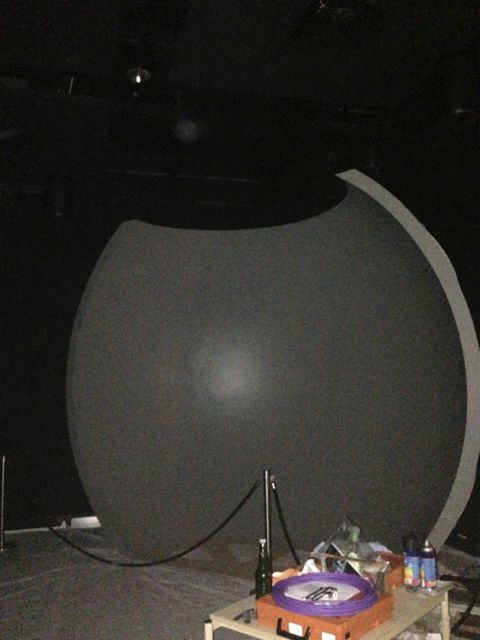
The CDVF is staffed by 2 technical assistants and an expert in Stereoscopic projection, Mr Andrew Woods, the Managing Director of CDVF.
Much of the content design will be handled at various creation nodes on campus.
At the School of Media Culture and Creative Arts I have access to the following new postgrad research lab, featuring dual screen MacPros and iMacs.
Do I have enough project ideas? Yes!
Next step: grants, partners, and students! If you any of the three, please contact me!
Centre for Playware – The MIT Media Lab of Denmark?
Fantastic stuff! Knew nothing about them when I worked in Denmark!
I invited myself to pay Centre for Playware a visit. This is a department of Technical University of Denmark (DTU), just outside Copenhagen. I was a part of a research project with them and ATR about the robot Telenoid (read more about that project here). A friend from that project is doing his PhD here and thought it might be a good idea to see what they have been doing lately. Centre for Playware is a lab-style research department in the crossfield between play and technology. The place is small and the staff list contains less than 10 people, ahead of this is professor Henrik Hautop Lund. The projects are state of the art when it comes to innovating technology and play. They are all based on movements, sounds, games, modules, fun and learning – though learning isn’t the main goal!
Take the Modular Robotic Tiles…
View original post 432 more words
Researchs into interactive maps, multimedia cartography
Recent interactive mapping projects I mentioned
http://orbis.stanford.edu/#
http://www.dailymail.co.uk/sciencetech/article-2313590/The-interactive-map-reveals-Britains-popular-surnames.html
Migration map http://migrationsmap.net
Interactive ‘immigration explorer’ map http://www.nytimes.com/interactive/2009/03/10/us/20090310-immigration-explorer.html?_r=0
The Human Journey: migration routes https://genographic.nationalgeographic.com/human-journey/ and lessons http://education.nationalgeographic.com.au/activity/global-patterns-human-migration/?ar_a=1
Journey of mankind http://www.bradshawfoundation.com/journey/ (http://www.geography.org.uk/cpdevents/onlinecpd/migration/ahistoryofmigration/) Overview at http://www.findingdulcinea.com/features/science/The-History-of-Human-Migration.html
Side note: The great human migration -Why humans left their African homeland 80,000 years ago to colonize the world
http://www.smithsonianmag.com/history-archaeology/human-migration.html
Potential research partners
@Curtin, spatial sciences and Ric Lowe http://humanities.curtin.edu.au/schools/EDU/staff.cfm/R.K.Lowe
UCL http://makingmaps.net/category/13-multimedia-mapping/
Vis: RMIT http://www.rmit.edu.au/mathsgeo/research/geospatial/cartography
UTAS http://www.utas.edu.au/research/graduate-research/elite/humanities/history–and–classics/from-colonial-cartography-to-digital-mapping-tasmania-c.1780-2010
Unimelb http://www.land-environment.unimelb.edu.au/research/cartographic-and-spatial-services/
SBS http://www.sbs.com.au/shows/cq/about/page/i/3/h/Research/
ACMI http://www.acmi.net.au/research-resources.htm
Museums-National Museum, UWA, Maritime, Immigration, etc
Mapping sciences australia http://www.mappingsciences.org.au/heritage/cartography-foundation
Instotute of Australian Geographers http://www.iag.org.au/publications/geographical-research/
CSIRO http://www.csiro.au/Organisation-Structure/Divisions/Ecosystem-Sciences/GEHES.aspx (Dr Kirsten MacLean http://www.csiro.au/Organisation-Structure/Divisions/Ecosystem-Sciences/KirstenMaclean.aspx(
NB
Australian public datasets http://data.nsw.gov.au/links
Immigration websites http://www.besthistorysites.net/index.php/american-history/immigration
Europe History Interactive Map http://www.worldology.com/Europe/europe_history_md.htm
Examples for kids http://www.eduplace.com/kids/socsci/ca/books/bkf3/imaps/
Global migration map http://www.open.edu/openlearn/society/international-development/international-studies/global-migration-map
Times maps http://www.timemaps.com/history
AUSTRALIA
National museum resources http://www.nma.gov.au/education-kids/classroom_learning/by_subject/australian_history
Typical curriculum lessons http://www.australiancurriculumlessons.com.au/2013/01/18/australian-history-lesson-migration-and-settlement-in-australia/
NSW http://www.migrationheritage.nsw.gov.au/homepage/
Australian Immigration history http://www.family-getaways-melbourne.com/australia-immigration-history.html
Listen to the Forgotten Australians and Former Child Migrants oral history interviews http://www.nla.gov.au/digicoll/ListentotheForgottenAustralians.html
GOLD! http://www.sbs.com.au/gold/ Explore the impact of the gold rushes on Australia and uncover the stories of the diggers at SBS GOLD! The topics below detail the varied results of the gold rushes on the young colonies of Australia, and use newspapers, diaries and memoirs to uncover the personal experiences of those caught up in the rush.
World atlas Oceania http://www.worldatlas.com/webimage/countrys/oceania/au.htm Multicultural australia http://www.multiculturalaustralia.edu.au
Australia civilisation http://www.michellehenry.fr/civiaus.htm
Curtin CDVF space: 1 installed, 3 to go
There will be a truncated dome (to the right), a tiled dispay, a half-cylindrical display 8 metres in diameter, and a wedge (stereo projection, also stereo projection for the half cylinder).
More information here: http://www.curtin.edu.au/research/about/ict/news/visualisation.cfm

